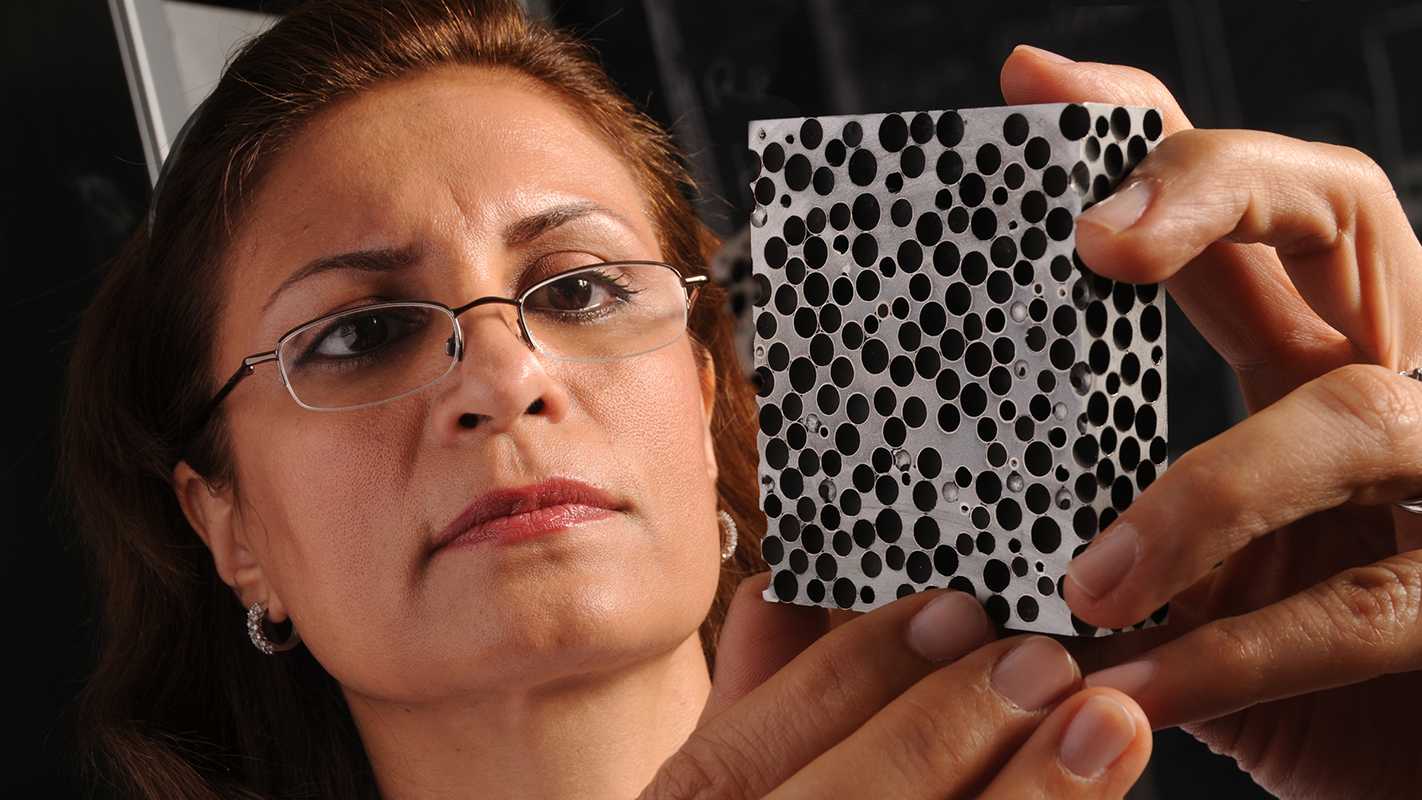Metal Foam Obliterates Bullets – and That’s Just the Beginning
Composite metal foams (CMFs) are tough enough to turn an armor-piercing bullet into dust on impact. Given that these foams are also lighter than metal plating, the material has obvious implications for creating new types of body and vehicle armor – and that’s just the beginning of its potential uses.
Afsaneh Rabiei, a professor of mechanical and aerospace engineering at NC State, has spent years developing CMFs and investigating their unusual properties. The video seen here shows a composite armor made out of her composite metal foams. The bullet in the video is a 7.62 x 63 millimeter M2 armor piercing projectile, which was fired according to the standard testing procedures established by the National Institute of Justice (NIJ). And the results were dramatic. (The video can also be found at https://www.youtube.com/watch?v=lWmFu-_54fI).
“We could stop the bullet at a total thickness of less than an inch, while the indentation on the back was less than 8 millimeters,” Rabiei says. “To put that in context, the NIJ standard allows up to 44 millimeters indentation in the back of an armor.” The results of that study were published in 2015.
But there are many applications that require a material to be more than just incredibly light and strong. For example, applications from space exploration to shipping nuclear waste require a material to be not only light and strong, but also capable of withstanding extremely high temperatures and blocking radiation.
Last year, with support from the Department of Energy’s Office of Nuclear Energy, Rabiei showed that CMFs are very effective at shielding X-rays, gamma rays and neutron radiation. And earlier this year, Rabiei published work demonstrating that these metal foams handle fire and heat twice as well as the plain metals they are made of.
Now that these CMFs are becoming well understood, there could be a wide array of technologies that make use of this light, tough material. Armor, if you’ll forgive the pun, barely scratches the surface.
- Categories:



